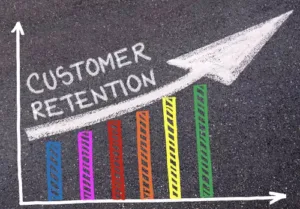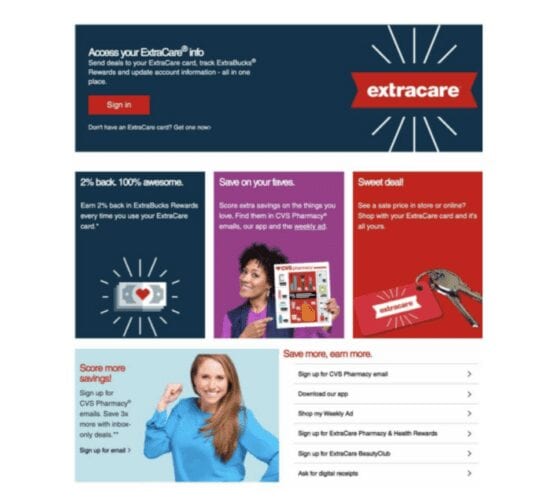Customer Retention and Metrics You Should Track
The Quest for Improved Customer Experience
You might also like…
Customer Journey Mapping for Market Researchers
Today, every aspect of digital marketing and the all-embracing marketing umbrella is led by those on the other end of these interactions – the customers. Instead of asking how you can get the customer to do what the marketers intend, the question focuses on eliciting solutions for helping the customer achieve their goals while fulfilling yours…
Concept Testing Methods for Market Research
Concept testing provides valuable insights into market readiness and consumer behaviorInside this Article... Introduction What is Concept Testing Methods of...
To say that customer retention is paramount will be an understatement, especially for B2B companies that spend big dollars on lead generation and conversion.
By not engaging tactics and strategies that keep consumers and clients around, businesses risk losing consumers and more money on new customer acquisition.

In fact, a 2014 detailed analysis in the Harvard Business Review suggested that acquiring new customers can be 5 to 25 times more expensive than what you would spend retaining existing rosters.
Bain & Company further adds value to the importance of customer retention in a study that shows that a 5% increment in customer retention rates can potentially lead to a 25% to 90% increase in profit.
Today, we’ll delve a little deeper into understanding what customer retention is. Look at few examples of programs in action and customer retention metrics that will allow you to devise effective strategies to keep customers interested and loyal.
Let’s start with the basics.
What is Customer Retention?
The definition is not profound. Any activity, action, or strategy a company designs and enforces to…
- retain existing customers
- prevent clients from switching to a competitor
- to ensure customers spend more money
The goal is to sustain and improve customer relationships through customer loyalty programs and initiatives. The strategies begin working the moment customer retention begins, with the first interaction.
One example of a customer retention strategy is CVS’s Extra Care® program.

This particular program allows the retail corporation to utilize customer insights such as purchase patterns to deliver hyper-personalized and targeted ads. These ads allow customers to find relevancy, impacting the company’s bottom line.
What do customer retention strategies involve?
The answer lies in these numbers…
- the number of customers you already have,
- the number of customers making high-value purchases,
- the money you’re willing to spend to retain those customers’ loyalty,
- and the customer churn you’re willing to endure.
When you’re devising a customer retention strategy and program, you have to begin by understanding your customer base. The first customer retention aspect on the list includes your targeted customer segments.
Based on the buyer persona you developed during the early stages of market research, you can identify similar needs and group them into corresponding segments. This will further allow you to identify which segments perform better in terms of revenue generation and loyalty.
Second, you have to extrapolate what you know about your loyal segments. When you’re investing in retention strategies, you want to make sure that you know what appeals to them. Insights such as buyer motivators from conjoint modeling (price, specs, etc.), brand image from tracking data, previous purchase history, etc., will allow you to tailor strategies further to strengthen your retention goals.
The next consideration is for the costs you’re already spending and what you’re willing to spend further. First, figure out how much you’re paying to serve them already. This will allow you to designate a budget for your retention strategies.
And lastly, customer churn is an important part of your retention strategy. This is because there are critical moments where churn might actually benefit your plans rather than impede it, the reason being that some customers are more expensive to retain.
For instance, if two out of the 10 customers in one segment cost five times more to retain than the remaining eight, it’s better to cut the two off. Yes, this will increase your churn but save you money that could be invested to retain other customer segments.
Measuring Customer Retention
Customer retention is an ongoing aspect of your overall marketing strategy. It’s not one and done and requires continuous monitoring to generate effective results and evolve their strategies accordingly.
When it comes to measuring customer retention, the formula is not that difficult to understand. You begin by identifying:
- The total number of Customers at the End of a sales period (CE)
- The total number of Customers at the Start of the sales period (CS)
- The total number of New Customers you acquired in that period (CN)
Subtract the number of new customers acquired from the total number of customers at the end of the period (CE-CN). And then divide it by the total number of customers you had the start (CS). Multiply by hundred to calculate the Retention Rate.
Customer Retention Metrics to Track
In addition to Retention Rate, there are numerous other customer retention metrics that you can track alongside to get a more rounded insight into your retention rate. Here are some of the metrics you need to add to your marketing roster:
Customer Churn
Churn rate refers to the rate at which customers cease interacting with your business. It means the attrition where customers cut ties, identifying unsuccessful retention efforts. While some attrition is natural and expected, anything above 5% can hint at potential customer experience issues. You can use this information to identify whether it’s your services failing to meet customer expectations or your website’s UX design.
You can calculate the year’s churn rate by:
- Subtracting the number of customers at the start of the year from the number of customers at the end of the year
- Divide the result by the total number of customers at the start of the year
Repeat Purchase Ratio (RPR)
Repeat Purchase Ratios identify the percentage of customers that come back to your business to make a purchase. This is one of the most important gauges of customer loyalty, often used to determine the retention strategy’s performance. It also identifies the types of purchases customers have made.
This metric can be calculated weekly, monthly, quarterly, or annual timeframes. To measure, divide the number of returning customers by the total number of customers at the end of the timeframe you chose to calculate.
Time between Purchases
As the name suggests, the metric calculates the time it takes an average customer to come back and make another purchase. It helps you determine the product’s performance and whether the customers are happy with it or not.
To calculate the time between purchases, you have to keep an accurate and ongoing record of purchases, the dates, quantities, etc. It would be best if you calculated the purchase rate for each customer. Add the individual purchase rates and then divide the number of the total number of repeat customers.
Loyal Customer Rate
The Loyalty Customer Rate refers to customers that make purchases again within a given time frame. Loyalty is a critical element of customer retention. This metric is key as it identifies which customers are worth the dollars you spend retaining and serving them. In addition to boosting your sales and revenue, these customers will also play a role in generating positive user-generated content. In the context of NPS (Net Promoter Score), they will be promoters.
To calculate, divide the number of repeat customers by the total number of customers and then multiply the result by a hundred.
Customer Lifetime Value or CLV
This value measures the revenue generated by one individual customer. Regardless of your offerings and sales cycle, this metric should be measured and recorded on a continuous basis. The goal is to sustain consistency in the Customer’s Lifetime Value. If it’s decreasing, it means you are losing customers.
To project CLV, divide your company’s overall gross sale by the number of unique customers you had during the year. Next, record how long an average customer stays on with your business. Multiply the two figures to get the CLV.
While these metrics are more relative, other customer retention metrics can help your mission devise effective strategies. Besides the Net Promoter Score, revenue churn, existing customer growth rate, and product return rate can be useful.
Using these insights, your marketing team can develop email marketing campaigns, individualized offers, targeted ads, retargeting campaigns, loyalty programs, reward programs, etc., to retain loyal and high-value customers.
Follow
OvationMR

Jenn Whaley
Author
Jenn Whaley is Chief Commercial Officer at OvationMR, leading global sales and marketing. She posts regularly on The Standard Ovation.
OvationMR is a global provider of first-party data for those seeking solutions that require information for informed business decisions.
OvationMR is a leader in consistently delivering insights and reliable results across various industry sectors around the globe for market research professionals and management consultants.

Need help with your project?
We are ready to offer you:



